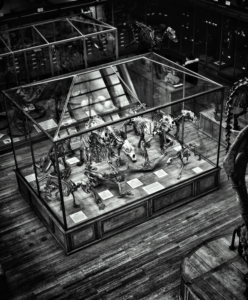The parable of the bicycle, dad and leadership models
As a facilitator and a learning protagonist, over many years, I have lost count of the number of leadership models shared in workshops. I have probably forgotten more than I have remembered!
Which model?
There are my favourites such as situational leadership, servant leadership, values-based leadership, action centred leadership, adaptive leadership and a whole list of styles and 4 box grids that I have used and am very familiar with. Recently however, towards the end of a workshop a curious thoughtful participant asked, “So, which leadership model is best?” A very direct question indeed. My response was a simple one, “well……that depends”
While most of us can recognise good leadership when we experience or observe it, oftentimes it is hard for us to determine the best model to use in a difficult situation, subsequently blending leadership models as needed is a popular fix. But then it struck me. As I reflected upon the many leadership experiences I’ve had in life, a clear analogy came to mind.
The parable of the bicycle and toolbox
As a child, I recall one day that I wanted to go out on my bicycle for a ride. Forlornly, there were several issues with my bicycle, including a wobbly seat, a flat tyre, a loose wheel, poor brakes, and handle bars that were more than just a little squint. I’d not been out for a ride in a while and sadly my bicycle had fallen into disrepair. I called my dad down to the shed in the garden. He came and looked at the bicycle commenting upon the amount of work it needed to get it back into shape.
 After a long pause, I recall that he set to work immediately and pulled out a big box of tools. The box was a little higgledy piggledy, and as I learned throughout his life – that that was my dad! No matter, one small spanner was used to tighten the wobbly seat. Another set of tools were used to remove the wheel, repair the puncture and blow up the tyre again and tighten it into position. Dad then got out a set of pliers to fix the brakes. Finally, another wrench was used to straighten the handlebars. All in all, using a variety of tools, after a short time, the bicycle was fixed and off I went on my ride with a gleeful smile. “Dads are great” I thought!
After a long pause, I recall that he set to work immediately and pulled out a big box of tools. The box was a little higgledy piggledy, and as I learned throughout his life – that that was my dad! No matter, one small spanner was used to tighten the wobbly seat. Another set of tools were used to remove the wheel, repair the puncture and blow up the tyre again and tighten it into position. Dad then got out a set of pliers to fix the brakes. Finally, another wrench was used to straighten the handlebars. All in all, using a variety of tools, after a short time, the bicycle was fixed and off I went on my ride with a gleeful smile. “Dads are great” I thought!
So, it is with leadership. Oftentimes, whilst managing and leading others we are faced with a vast array of different problems, challenges and issues. Yet, just like the multitude of tools in my dad’s box, so we too have a broad range of different leadership models to help us resolve/fix/repair/manage/lead even the most mind-boggling obstacles at times.
Tools equip us with solutions. What new shiny model do you have in your leadership toolbox, or maybe that old well-worn rusty model, over there in the corner is the best solution perhaps.
“It depends” is indeed the correct answer after all.
- Do you have a favourite leadership model?
- How do you apply the “tools” in your day to day responsibilities?

 No organisation can stand still. Many are already faltering or in reverse. They must change gear, tailor an agile response and move forward, or like the dinosaurs they too will become artefacts, cast into a museum for us to recall how the once mighty have fallen.
No organisation can stand still. Many are already faltering or in reverse. They must change gear, tailor an agile response and move forward, or like the dinosaurs they too will become artefacts, cast into a museum for us to recall how the once mighty have fallen.